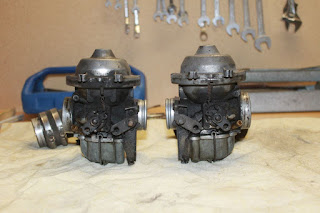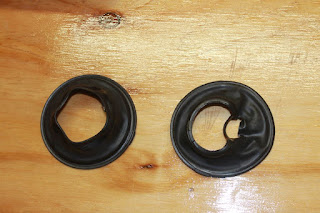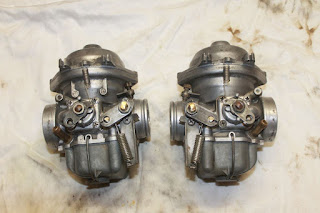On a ride recently my bike started unreliably: there was a "click" from under the tank but no life from the starter motor. In each case I was able to get the bike started after a few attempts and moving it around a bit. I wasn't sure if the problem was the relay or motor itself, but neither has been serviced, ever, so I figured I'd replace both.
I purchased an Arrowhead starter for AUD219. This was less than twice the cost of overhaul parts for the original BOSCH starter.
 |
| Shiny new Arrowhead starter installed. |
Replacement was straightforward except for a couple of points.
- There are two hex head bolts holding the starter in place. The one on the left side of the bike could be turned using a ring spanner, but the housing wouldn't allow this on the right. I had a socket that fitted, but to get access for this I needed to remove the airbox and battery, which was a nuisance. When reassembling it I used an allen key bolt, so this should be avoided next time.
- There is a bracket on the leading edge of the starter under the timing chain cover. It has 3 bolts, two on the starter and one on the engine. One of the bolts on the starter is impossible to get off while the starter is in place, but the lower bolt, screwing the bracket to the engine, can be accessed using a 10mm socket from the front.
- The relay I purchased had 4 connections and is appropriate for other functions on airheads, but not necessary on my bike. The correct relay has 5 connections.
- Care needs to be taken removing the relay with a screwdriver because one of the connections is always live, and so can spark.
- The crankcase breather hose was perished, clearly visible in the pic, and was replaced.
 |
| LHS Spanner Access |
After this was done with the original starter relay in place the bike didn't start, so I swapped in the relay from the other bike and it started sweetly, no problems. So, the problem from the beginning was the relay, not the starter itself.
 |
| Shiny new Arrowhead starter installed. |

















